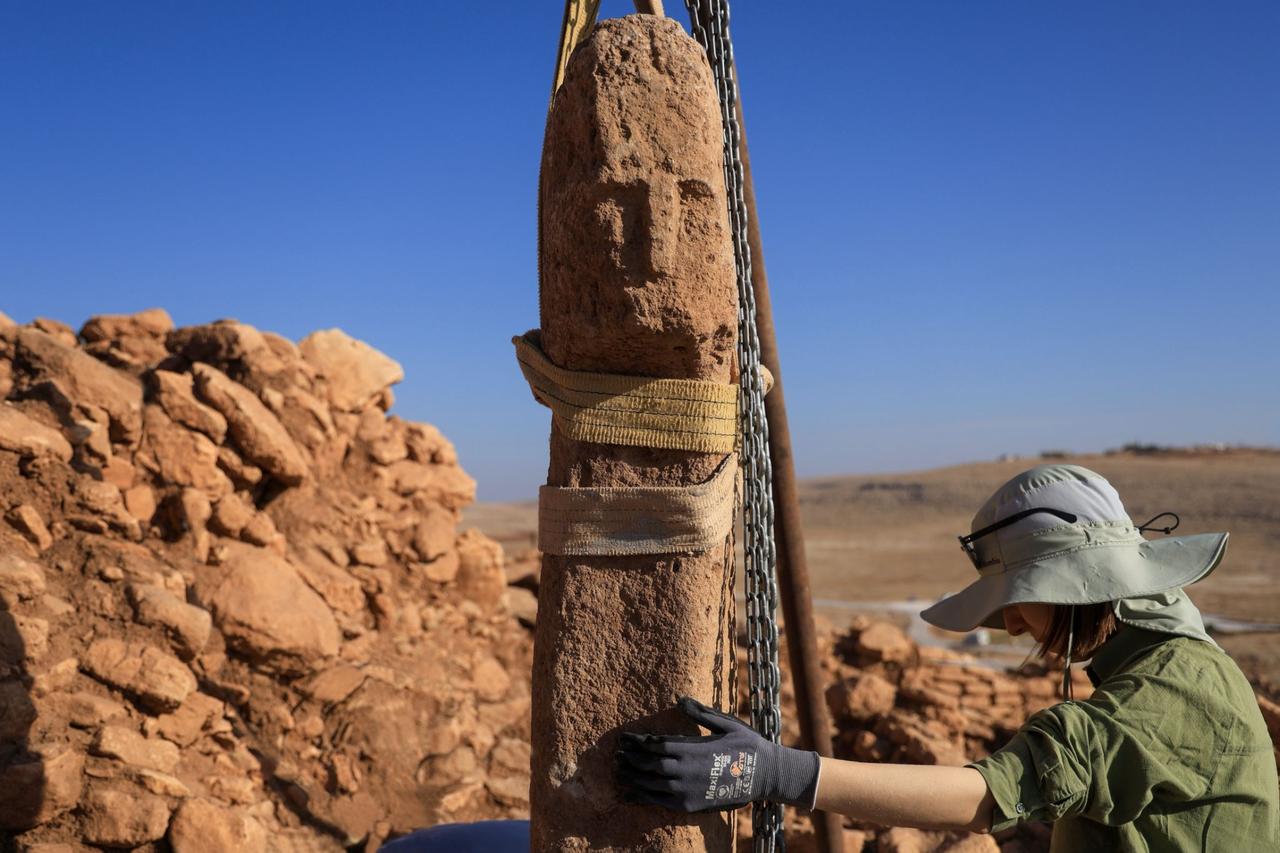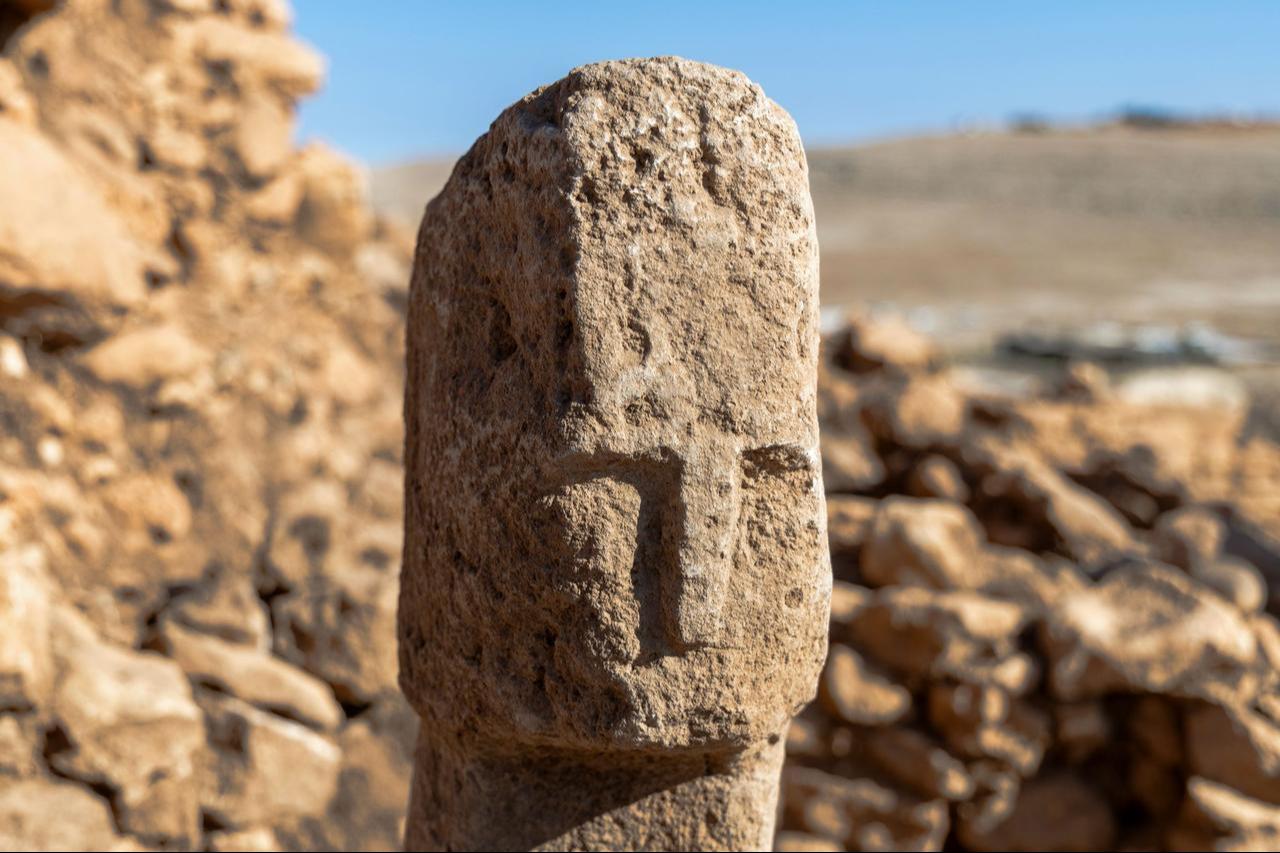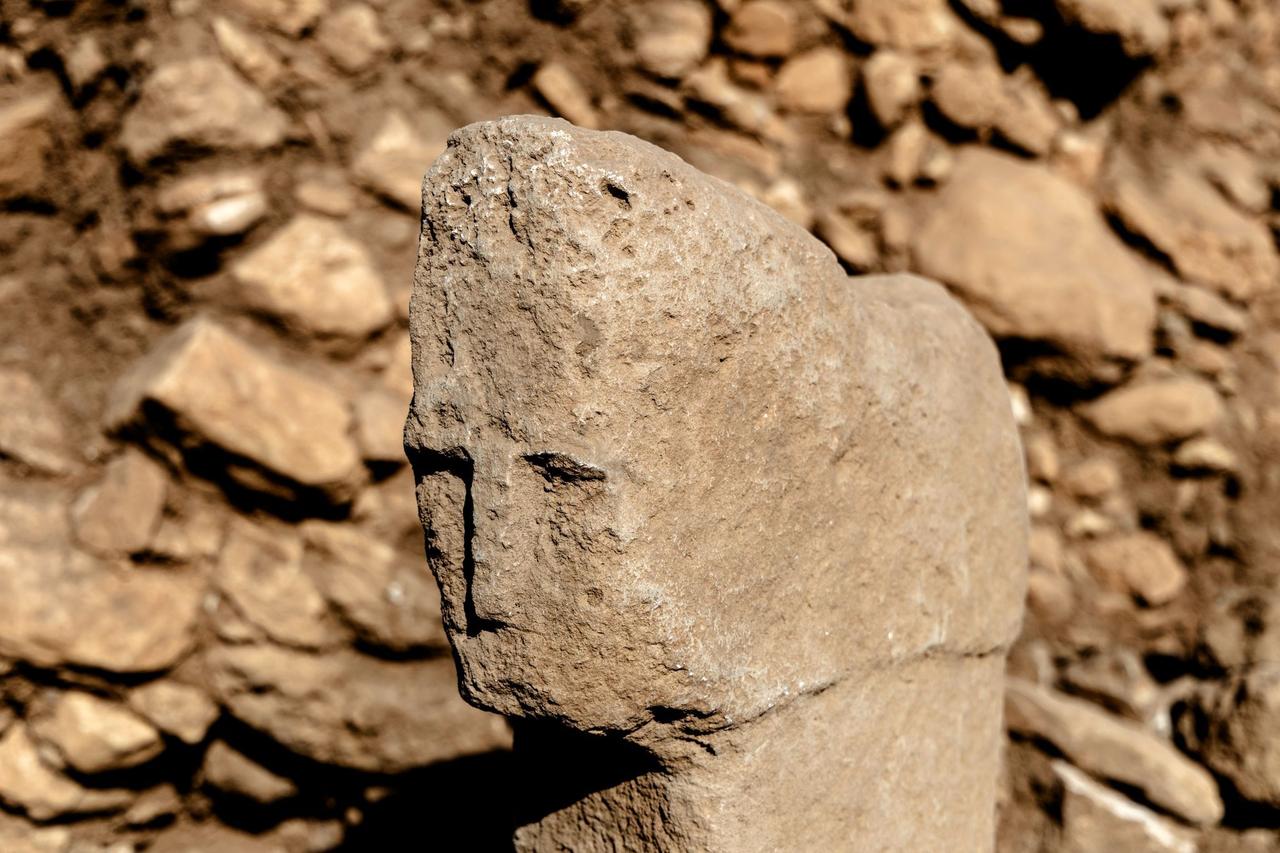
Türkiye’s Minister of Culture and Tourism, Mehmet Nuri Ersoy, announced that archaeologists have uncovered a T-shaped pillar depicting a human face in Karahantepe—marking the first such discovery in history.
The find was made as part of the ongoing excavations within the Tas Tepeler (Stone Mounds) Project, an initiative that explores the earliest known monumental sites in human history across southeastern Türkiye.

T-shaped pillars—familiar from Gobeklitepe and other nearby Neolithic sites—have long intrigued archaeologists for their stylized arms and hands carved along the shafts, suggesting that the pillars symbolized human figures. The latest find at Karahantepe, however, takes this idea further: for the first time, one of these monumental stones bears a distinctly carved human face.
The depiction, located on the upper section of the pillar, features sharply defined contours, deep-set eyes, and a broad, flattened nose. Researchers note that these traits echo the stylistic features seen in other human sculptures previously unearthed at the site. The find is now considered a turning point in the study of early human symbolism and artistic expression.
Archaeologists uncover a 12,000-year-old T-shaped pillar bearing a human face at Karahantepe, marking a first in Neolithic archaeology, southeastern Türkiye, Oct. 6, 2025. (Video via Ministry of Culture and Tourism)
For decades, scholars have debated whether the massive T-shaped stones served a structural purpose, symbolic meaning, or both. This new discovery reinforces the view that these pillars were not only architectural elements but representations of the human form itself—perhaps even the earliest known attempts at portraiture.
By portraying facial features for the first time, the Karahantepe pillar reveals how Neolithic people may have begun to express identity, spirituality, and the human condition through art.

The Tas Tepeler Project, covering multiple excavation sites across southeastern Anatolia, documents the transition from hunter-gatherer to settled life. Spanning a period roughly 12,000 years ago, this region offers unique insights into the origins of communal architecture and belief systems.
The Karahantepe discovery adds to a growing body of evidence that southeastern Türkiye was not only a cradle of civilization but also a birthplace of symbolic thought—where humans first carved their likeness into stone.